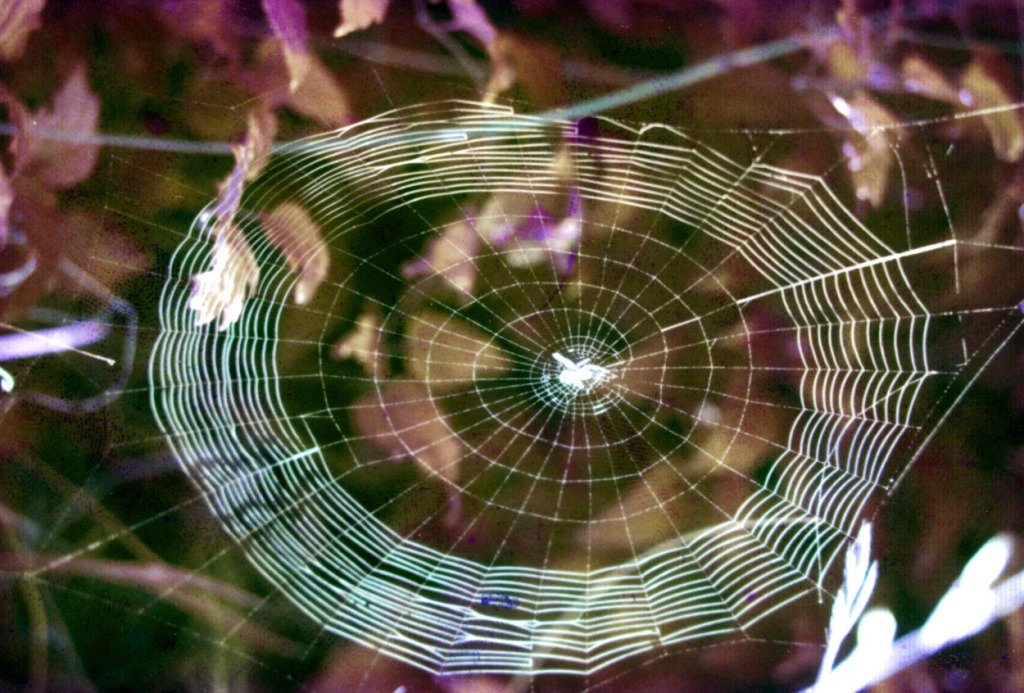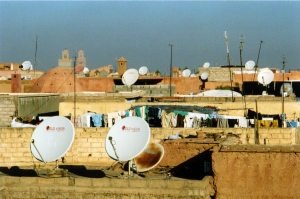
On occasional good days, mundane tasks, problem solving on the go, are like meditations, and how I begin, how I sequence, and how I end a task, has a fine rhythm to it.
Let’s say I prepare a meal, I go about it in the simplest, energy and time efficient way, via knacks acquired through practice. This applies to washing, cleaning, shopping, gardening, fixing things etc. …
What delights, is when I do a little thing different, like change the sequence of, or slow down the attention and attitude towards a task, and in the process discover symbolic correspondences. By symbolic I mean here the recognition of pattern similarities between different fields (contexts, scales, environments,) from being awed by how the geometries in nature resemble galaxies, to how the moon cycle affects plants in the same way as my mood. Creative minds are haunted by beauty and meaning. They may discover how their life’s myth is hidden in the narrative of a fairy tale, or, as suggested by Blake, see the world in a grain of sand …
Observing how I do myself, slightly distanced from the task at hand, can open novel perspectives. In the expanded space even a dream-image from the night before can revisit.
I can also project observing eyes on anything or anyone, including cats, dogs, foxes, birds, trees … let’s assume a fly – the fly that defies its instincts and does not go for the window or door, but insists on buzzing around my head, I could invest that fly with the function of spying on me and in the process craft an epic spy fly tale.
I’m easily sucked into stories, because fresh points of view sometimes bring on an AHA moment from the unconscious nowhere (suddenly now here.) I could call it a singularity, unfolding in my embodied being in time, and changing the way I operate my relationship with myself, others, and the world at large.
Imagination, playfulness, thinking out of the box and intuition bring joy to body and mind.
Imagination in German is – Einbildungskraft – the strength to make connections and build something in the sphere of one’s mind. For those who don’t make use of this human capacity, life may become reactive and stale. While hunger is a basic need, the desire for a variety of tastes is acquired.
We have our peculiarities in the ways we communicate between inside subjective reality and outside objective reality, the way we approach a problem, do things, see things, interpret events, and in the way we are influenced by the weather, our digestive system, or personal and collective moods. Each of us is unique in how we engage with the universal consciousness we are embedded in. Specialists with a narrow focus tend to make boring company, and will, I guess, soon be replaced by AI avatars, but well-rounded and irrational humans, aware of being present in their bodies and all the experience and memories held in their bodies, cannot be replicated.
So I reckon we cannot reboot human lives
Once they become spiritual beings
They reboot humans
With fresh information
And meaning
“Long live the dead because we live in them.”
― Clarice Lispector – A Breath of Life
At times I envisage copies of myself, to shake hands with, or relieve me of tasks I consider tedious … though these copies nest of course inside my psyche, assigned with different yet overlapping functions. Ideally I wish for this cluster of subs, let’s call them subpersonalities, to cooperate, and such synchronicities do occur on rare occasion. They are wondrous moments of being, infused with the deeper intelligence of universal consciousness.
Oh, and please buy, read and review my latest novel.
SHAPERS, the sequel to Course of Mirrors … https://www.troubador.co.uk/bookshop/sci-fi/shapers/
Available on many platforms and through bookshops.
You’ll meet characters you know
And maybe yourself
You’ll meet the past in the now
And the future too
In this subversive tale
I and thou become
Entwined in one being

 As painters or sculptors do, I frequently step back from my writing projects, searching for the core, a half imagined essence to shine through and re-animate the creative flow. Skills alone don’t do it, techniques alone don’t do it, nor style. As long as the essence of what I try to express floats in the unconscious, my efforts will baffle and tease me.
As painters or sculptors do, I frequently step back from my writing projects, searching for the core, a half imagined essence to shine through and re-animate the creative flow. Skills alone don’t do it, techniques alone don’t do it, nor style. As long as the essence of what I try to express floats in the unconscious, my efforts will baffle and tease me.

 moment arrives when black and white spaces inverse and clusters of stars shine from another dimension. The background has moved to the foreground. A tiny shift in our outlook can result in a new interpretation of what we see, like in the
moment arrives when black and white spaces inverse and clusters of stars shine from another dimension. The background has moved to the foreground. A tiny shift in our outlook can result in a new interpretation of what we see, like in the  irritate us lie foremost in a person’s unique temperament and inherent tendencies. Background does not explain the mystery of characteristics we are born with, the random mix of evolutionary records in our bodies, a wisdom our minds expand upon through resonance with the
irritate us lie foremost in a person’s unique temperament and inherent tendencies. Background does not explain the mystery of characteristics we are born with, the random mix of evolutionary records in our bodies, a wisdom our minds expand upon through resonance with the  How come I’m invigorated by rushing waters, calmed by a smooth stone, a golden sunset? How do I sense the pulse in a tree, or what life is like for a boar, rat, ox, tiger, rabbit, dragon, snake, horse, sheep, monkey, rooster, dog – unless all nature’s qualities also reside in me?
How come I’m invigorated by rushing waters, calmed by a smooth stone, a golden sunset? How do I sense the pulse in a tree, or what life is like for a boar, rat, ox, tiger, rabbit, dragon, snake, horse, sheep, monkey, rooster, dog – unless all nature’s qualities also reside in me? At social gatherings we may come upon clusters of meerkats grooming each other, turtles plodding through the crowd looking for a mate or a fresh salad leaf, peacocks, obsessed with their splendour, blustery cockerels, loving old dogs, sharp-eyed falcons, enchanting robins, and so on. …
At social gatherings we may come upon clusters of meerkats grooming each other, turtles plodding through the crowd looking for a mate or a fresh salad leaf, peacocks, obsessed with their splendour, blustery cockerels, loving old dogs, sharp-eyed falcons, enchanting robins, and so on. …
 with a butterfly nature tying up with a partner who occasionally roars. Given the rich lore of sensibilities mixing and battling in the human psyche, strangers should be less strange than we make them out to be.
with a butterfly nature tying up with a partner who occasionally roars. Given the rich lore of sensibilities mixing and battling in the human psyche, strangers should be less strange than we make them out to be. The Persian translation became the Fables of Bidpai. Lovely collections of
The Persian translation became the Fables of Bidpai. Lovely collections of 



